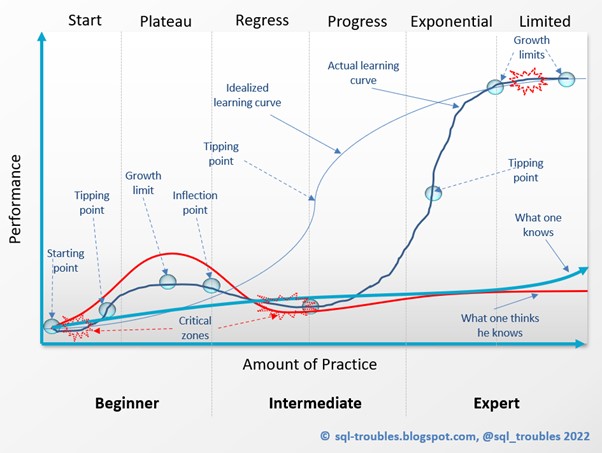 |
| Business Intelligence Series |
I've been working for more than 20 years in BI and Data Analytics area, in combination with Software Engineering, ERP implementations, Project Management, IT services and several other areas, which allowed me to look at many recurring problems from different perspectives. One of the things I learnt is that problems are more complex and more dynamic than they seem, respectively that they may require tailored dynamic solutions. Unfortunately, people usually focus on one or two immediate perspectives, ignoring the dynamics and the multilayered character of the problems!
Sometimes, a quick fix and limited perspective is what we need to get started and fix the symptoms, and problem-solvers usually stop there. When left unsupervised, the problems tend to kick back, build up momentum and appear under more complex forms in various places. Moreover, the symptoms can remain hidden until is too late. To this also adds the political agendas and the further limitations existing in organizations (people, money, know-how, etc.).
It seems much easier to involve external people (individual experts, consultancy companies) to solve the problem(s), though unless they get a deep understanding of the business and the issues existing in it, the chances are high that they solve the wrong problems and/or implement the wrong solutions. Therefore, it's more advisable to have internal experts, when feasible, and that's the point where business people with technical expertise and/or IT people with business expertise can help. Ideally, one should have a good mix and the so called competency centers can do a great job in handling the challenges of organizations.
Between business and IT people there's a gap that can be higher or lower depending on resources know-how or the effort made by organizations to reduce it. To this adds the nature of the issues existing in organizations, which can vary considerable across departments, organizations or any other form of establishment. Conversely, the specific skillset can be transmuted where needed, which might happen naturally, though upon case also considerable effort needs to be involved in the process.
Being involved in similar tasks, one may get the impression that one can do whatever the others can do. This can happen in IT as well on the business side. There can be activities that can be done by parties from the other group, though there are also many exceptions in both directions, especially when one considers that one can’t generalize the applicability and/or transmutation of skillset.
A more concrete example is the know-how needed by a businessperson to use the BI infrastructure for answering business questions, and ideally for doing all or at least most of the activities a BI professional can do. Ideally, as part of the learning path, it would be helpful to have a pursuable path in between the two points. The mastery of tools helps in the process though there are different mindsets involved.
Unfortunately, the data-related fields are full of overconfident people who get the problem-solving process wrong. Data-based problem-solving resumes in gathering the right facts and data, building the right conceptual model, identifying the right questions to ask, collecting more data, refining methods and solutions, etc. There’s aways an easy wrong way to solve a problem!
The mastery of tools doesn’t imply the mastery of business domains! What people from the business side can bring is deeper insight in the business problems, though getting from there to implementing solutions can prove a long way, especially when problems require different approaches, different levels of approximations, etc. No tool alone can bridge such gaps yet! Frankly, this is the most difficult to learn and unfortunately many data professionals seem to get this wrong!
Previous Post <<||>> Next Post






